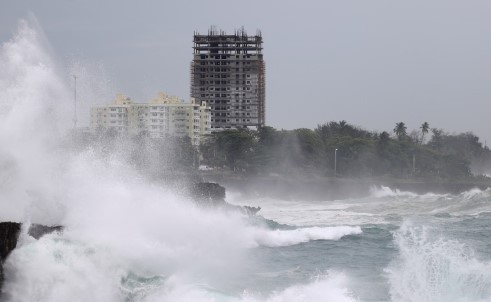Hurricane Beryl, a formidable Category 4 storm, swept through the southeast Caribbean and is now bearing down on Jamaica, leaving in its wake a trail of destruction and claiming the lives of at least six people. A hurricane warning is currently in effect for Jamaica, Grand Cayman, Little Cayman, and Cayman Brac.
Although Beryl has slightly weakened, it is anticipated to maintain major hurricane strength as it approaches Jamaica on Wednesday, moves near the Cayman Islands on Thursday, and heads towards Mexico’s Yucatan Peninsula by Friday, according to updates from the National Hurricane Centre.
The storm has prompted a hurricane watch for Haiti’s southern coast and the east coast of the Yucatan, with Belize issuing a tropical storm watch from its border with Mexico to Belize City.
Beryl made history as the earliest storm to reach Category 5 intensity in the Atlantic this year, peaking with winds of 270 kph on Tuesday before subsiding to a still-destructive Category 4. As of Tuesday night, Beryl was located approximately 480 km east-southeast of Kingston, Jamaica, with sustained winds of 240 kph, moving west-northwest at 35 kph.
The forecast warns of life-threatening winds and storm surges for Jamaica, prompting officials to urge residents in flood-prone areas to prepare for potential evacuation.
Prime Minister Andrew Holness of Jamaica addressed the nation, urging citizens to take the hurricane seriously while advising against panic. In Miami, National Hurricane Center Director Michael Brennan underscored the imminent threat to Jamaica, highlighting preparations for a major hurricane impact.
Storm surges of 6-9 feet above normal tide levels are anticipated in Jamaica, coupled with heavy rainfall that poses significant risks, particularly in mountainous regions prone to flash floods and mudslides.
In addition to fatalities reported in the Caribbean islands, including Grenada, Carriacou, St Vincent and the Grenadines, and northern Venezuela, thousands have been affected by heavy rains associated with Beryl.
Grenadian Prime Minister Dickon Mitchell described a grim situation in Carriacou and Petit Martinique, where extensive damage to homes and businesses has left roads impassable and communities isolated under heaps of debris.
In neighbouring St Vincent and the Grenadines, Prime Minister Ralph Gonsalves pledged swift rebuilding efforts for devastated islands, noting extensive destruction to homes and infrastructure on Union Island, Myreau, and Canouan.
Sharon DeRoche, evacuated from Union Island, recounted harrowing conditions during the storm, emphasising the dire state of the island post-Beryl.
The last major hurricane to strike the southeast Caribbean was Hurricane Ivan 20 years ago, which resulted in significant casualties in Grenada. Residents like 77-year-old Roy O’Neale, who rebuilt after Ivan, faced another ordeal with Beryl but were grateful for minimal damage this time.
Hundreds sought refuge in shelters across the region, highlighting the necessity of preparedness amidst severe weather events. Urban Mason, overseeing a shelter in Grenada, emphasised the importance of proactive safety measures in face of such natural disasters.
Simon Stiell, UN Climate Change Executive Secretary and native of Carriacou, condemned the intensifying climate crisis exacerbated by Beryl’s impact, urging global action to address escalating environmental hazards.
Grenada, renowned as the “spice isle,” faces substantial setbacks in its nutmeg production, particularly in the northern growing regions hardest hit by Beryl’s fury. Prime Minister Mitchell expressed concerns over the agricultural and economic implications of the storm’s aftermath.
As Hurricane Beryl continues its path towards Jamaica, regional authorities and international agencies remain on high alert, coordinating relief efforts and reinforcing emergency measures to mitigate further damage and safeguard affected populations.

















